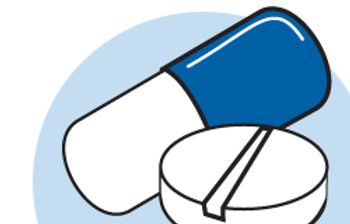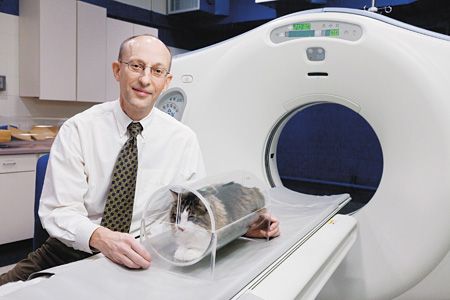
Respiratory Medicine
Latest News


Veterinary parasitologists, practitioners discuss the latest on diagnostics, differentials and incidence rates.

The goal of this study was to identify the percentage of atypical features found in dogs with leptospirosis as well as evaluate the clinical utility of convalescent titers.

A battery of diagnostic tests were needed to uncover the root cause of lethargy, inappetence and coughing in a 7-month-old dog.

Dr. Lindsay Ruland's clients, staff--even her children--experience symptoms she says seem related to canine condition reported in Ohio and Michigan.

Producers, veterinarians work through staggering herd loss and animal stress.

When it comes to the use of furosemide for treating EIPH, here's what veterinarians can all agree on.

Studies show equine nasal strips reduce airway resistance and mitigate exercise-induced pulmonary hemorrhage.

A look at how to best halt these infections in shelters.

Davis, Calif. - In a first study of its kind, veterinarians across the country reported on the prevalance of certain common pathogens among the equine population.

Pulmonary Fibrosis (PF) is an interstitial lung disease (ILD) that involves gradual replacement of the lung parenchyma with fibrotic tissue, resulting in diffusion impairment.

Feline allergic asthma, also called feline asthma, or feline lower airway disease, is often used to refer to a somewhat heterogeneous group of conditions affecting the lower airways of cats.

Traumatic thoracic injuries are prevalent in small animals, particularly in dogs.

Use these six pointers to ensure the successful use of inhalants in asthmatic cats.

Dr. Scott Shaw thinks you'll do more good than harm if you don't shy away from this life-saving procedure, especially if it's needed before transporting a patient to a referral center.

Among the key frustrations is a lack of understanding about exactly what this condition represents (i.e. Is there really a causal relationship to some form of infection? is it immune-mediated? Allergic?...). Since it is a diagnosis of exclusion, there is also always a bit of doubt about whether or not I may have missed a primary nasal diseas.

Asthma in human beings is a chronic inflammatory disease within the lower airways (bronchi and bronchioles) that causes cough, wheeze and exercise intolerance. These clinical signs are the result of a decrease in airflow through airways that are narrowed from excessive mucus secrection, airway wall edema and bronchoconstriction.

Patients with respiratory distress are often frail and excessive stress may progress to respiratory arrest. Non-invasive techniques are essential to avoid exacerbation of tenuous circumstances. One must rely upon abridged and fragmented physical examinations in the most serious cases, accurate historical information, and noninvasive diagnostics.

The use of inhaled medications is certainly not a new phenomenon in feline medicine. It makes intuitive sense that local delivery of medication might result in different actions than systemic administration. There are two primary methods for delivering inhaled medications to cats: 1) use of metered dose inhalers (MDI) or 2) use of a nebulizer to aerosolize liquid medications.

Diagnostic tests are obviously required to confirm the presence of many respiratory diseases in small animals. However, respiratory medicine is an underdeveloped subspecialty in veterinary medicine, and there are relatively few sophisticated tests that are available to the clinician that actually diagnose specific pulmonary disorders.

"Allergic" rhinitis is a difficult and frustrating clinical condition in cats. Because of the relatively young age at which many cats are afflicted, we assume that Feline Herpes Virus –1 (FHV-1) is part of the pathophysiology.

Although feline asthma is among the most commonly diagnosed respiratory conditions in cats, there is still a lot of confusion about how to define or classify this condition or how to differentiate it from other lower respiratory tract problems.

Upper airway disorders in dogs and cats include abnormalities of the nares, pharynx, larynx and trachea. The purpose of this manuscript is to highlight the most common upper airway disorders that we seen in canine and feline patients. A more detailed discussion will occur during the lecture.

The role thoracic radiography should play in determining the severity of lung disease in dogs.

Traumatic thoracic injuries are prevalent in small animals, particularly in dogs. The most common causes of thoracic trauma are motor vehicular accidents and bite wounds. Other possible, although less common mechanisms include gunshot, knife wounds or being kicked by a larger animal (horse/cow). Injuries may range from mild to life threatening.


